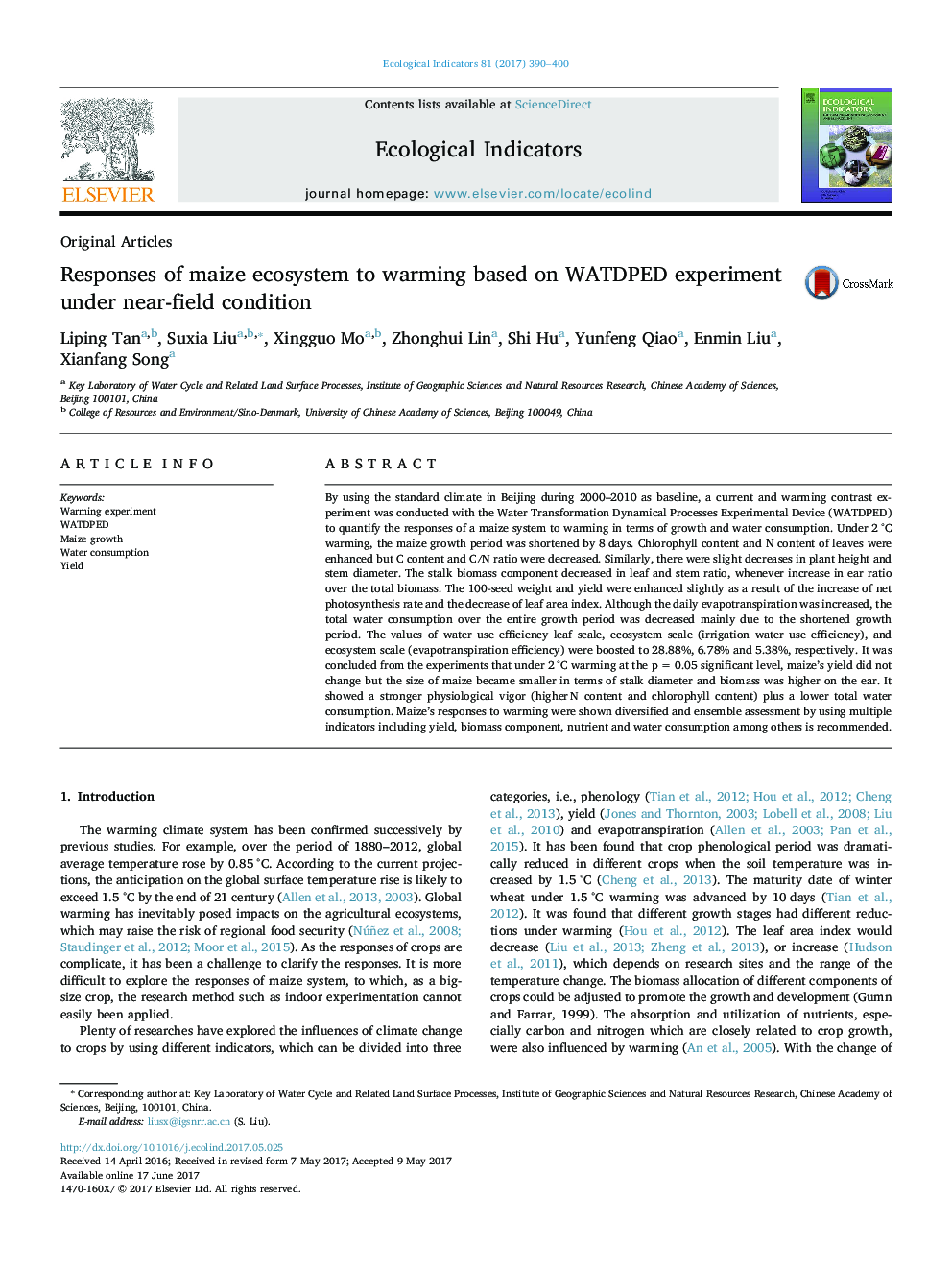| کد مقاله | کد نشریه | سال انتشار | مقاله انگلیسی | نسخه تمام متن |
|---|---|---|---|---|
| 5741444 | 1617121 | 2017 | 11 صفحه PDF | دانلود رایگان |

By using the standard climate in Beijing during 2000-2010 as baseline, a current and warming contrast experiment was conducted with the Water Transformation Dynamical Processes Experimental Device (WATDPED) to quantify the responses of a maize system to warming in terms of growth and water consumption. Under 2 °C warming, the maize growth period was shortened by 8 days. Chlorophyll content and N content of leaves were enhanced but C content and C/N ratio were decreased. Similarly, there were slight decreases in plant height and stem diameter. The stalk biomass component decreased in leaf and stem ratio, whenever increase in ear ratio over the total biomass. The 100-seed weight and yield were enhanced slightly as a result of the increase of net photosynthesis rate and the decrease of leaf area index. Although the daily evapotranspiration was increased, the total water consumption over the entire growth period was decreased mainly due to the shortened growth period. The values of water use efficiency leaf scale, ecosystem scale (irrigation water use efficiency), and ecosystem scale (evapotranspiration efficiency) were boosted to 28.88%, 6.78% and 5.38%, respectively. It was concluded from the experiments that under 2 °C warming at the p = 0.05 significant level, maize's yield did not change but the size of maize became smaller in terms of stalk diameter and biomass was higher on the ear. It showed a stronger physiological vigor (higherâN content and chlorophyll content) plus a lower total water consumption. Maize's responses to warming were shown diversified and ensemble assessment by using multiple indicators including yield, biomass component, nutrient and water consumption among others is recommended.
Journal: Ecological Indicators - Volume 81, October 2017, Pages 390-400